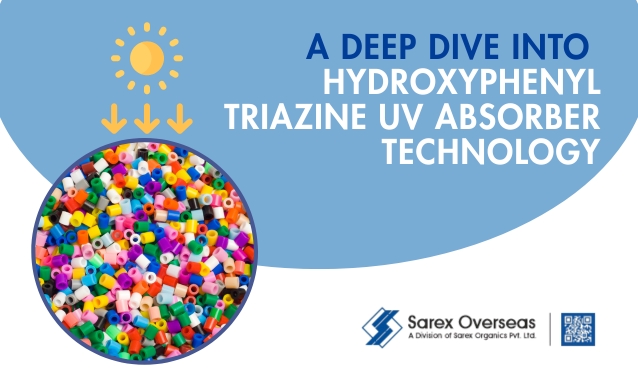A Deep Dive into Hydroxyphenyl Triazine UV Absorber Technology
Have you ever been curious as to why plastic products fade, the paints on cars look dull, and why wooden outdoor furniture starts appearing decrepit? UV radiation is one of the reasons. The sun’s invisible rays gradually disintegrate materials, making them weak, brittle, and discoloured. But don’t worry – Hydroxyphenyl Triazine UV Absorber technology is going to fix everything.
The system is able to work in conjunction with extreme sunlight, allowing it to maintain a fresh, appealing look effortlessly. The additional bonus is that it is way cheaper and more powerful than older UV absorbers. Let us try to find out how and why everyone is using it.
What is a Hydroxyphenyl Triazine UV Absorber?
In simple words, it is a high-performance chemical molecule that serves the important purpose of absorbing harmful UV rays and halting the UV rays from destroying materials. Hydroxyphenyl Triazine UV Absorber tends to outperform conventional UV stabilizers because they are composed in such a way that they will always be resilient. Being exposed to intense energy is not an issue. This implies long-lasting resistance for coatings, plastics, and various surfaces.
What Makes the UV Absorber So Unique?
Surprisingly enough, not all UV absorbers are the same.
What sets Hydroxyphenyl Triazine apart is the following:
Industries That Depend on Triazine UV Absorbers
- Handlers of Heat: Hydroxyphenyl Triazine can sustain high temperatures, making it widely accepted in industrial processes as well as high-temperature environments.
- Lowers the Pace of Degradation: Unlike older UV stabilisers, Hydroxyphenyl Triazine is more reliable since it does not evaporate or break down quickly.
- Compatibility with Other Products: Hydroxyphenyl Triazine combines with various polymers without any compatibility issues.
- High UV Radiation Absorbance: Among all the materials, Hydroxyphenyl Triazine has the highest UV absorbance, especially in the UV-B range, which is known to cause significant damage.
What Are The Applications Of This Technology?
Because UV damage is a problem that affects everyone, Hydroxyphenyl Triazine UV Absorbers are used in a wide range of business sectors.
- Automotive Paints and Coatings: These additives help preserve the aesthetic appearance of cars by preventing fading and peeling.
- Industrial Finishes: These additives help preserve the appearance of machinery and other structures in dire environmental conditions.
- Plastic Manufacturing: These additives are blended with plastic products to provide UV resistance, giving them a longer life.
- Wood Finishes: These additives enhance the aesthetic quality of wood by preventing discolouration.
What's Next For UV Protection?
With the increasing demand for long-lasting materials, Hydroxyphenyl Triazine UV Absorber technology is evolving. Researchers are improving its performance under severe situations. As industries migrate to long-lasting, sustainable materials, this UV protection approach is becoming increasingly important for businesses globally.
Why Does This Matter?
Any industry that deals with coatings, plastics, or materials exposed to sunlight should consider using Hydroxyphenyl Triazine UV Absorbers. They perform consistently well over a long period and support material integrity without deteriorating.
The next time you are impressed with the quality of the paint on a car or a plastic product, remember that there’s a good chance Hydroxyphenyl Triazine UV gets the credit. It is making the world a better place by protecting materials from UV radiation where other technologies have failed.

